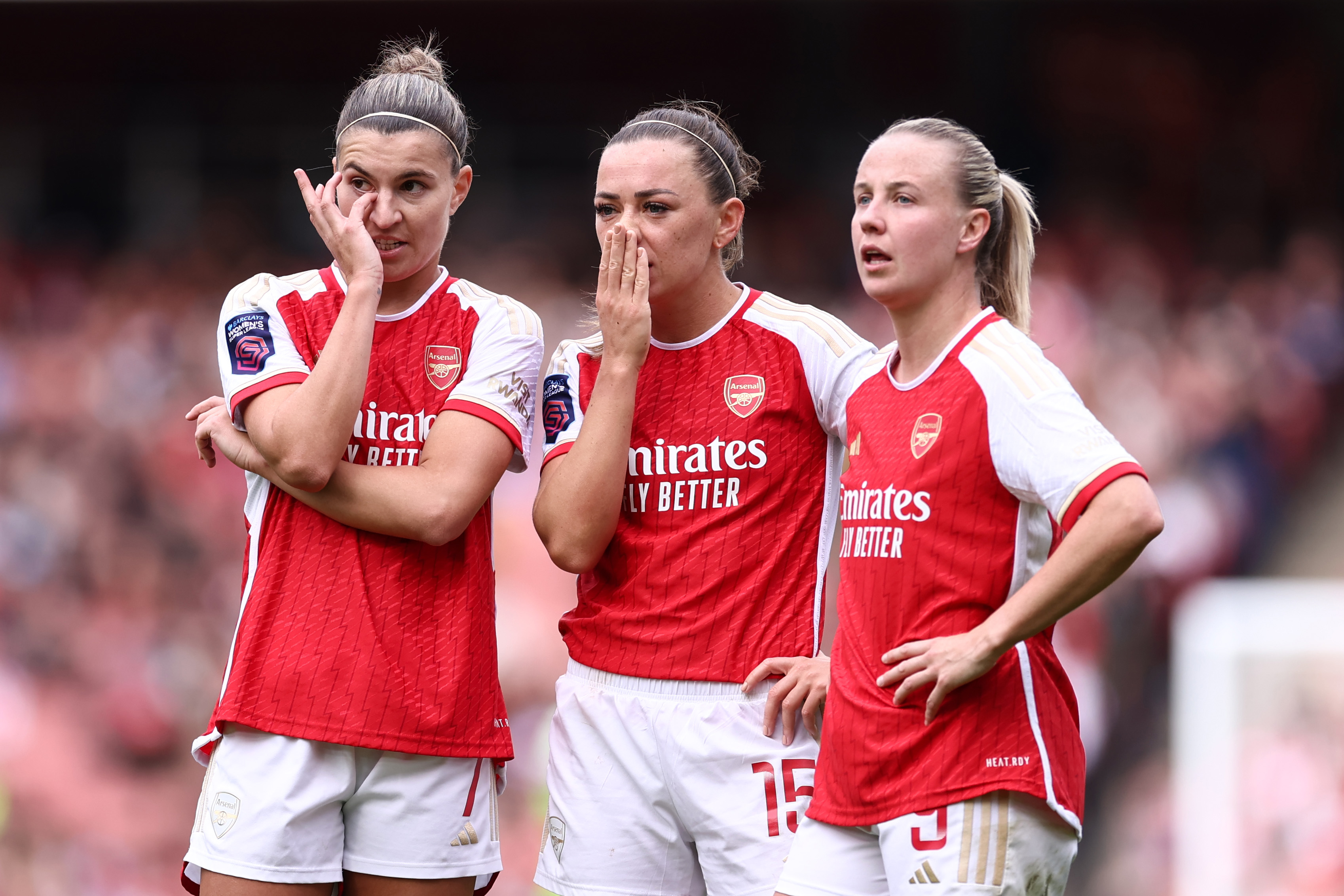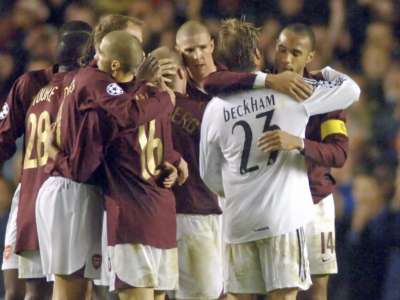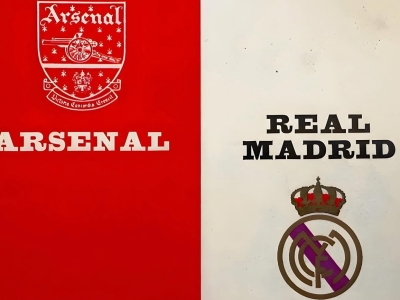Introduction:
When Tottenham achieved their historic win over Arsenal earlier in the season, it was a huge blow for Jonas Eidevall’s side, who lost a crucial three points and suffered their first ever defeat to their North London rivals.
Coming into this game it was vital for Arsenal to get a win, not only due to the importance of winning a North London Derby, but also to keep the pace in the league table.
Manchester City had achieved a 2-1 win over Everton the day previous and Chelsea had a game later on in the evening against Leicester (which they went on to win 4-0 comfortably).
The key discussion points from the previous game (Tottenham 1-0 Arsenal):
Tottenham played a 4-4-2, Arsenal played a 4-2-3-1.
- Arsenal tried to reach Frida Maanum and Beth Mead in between the lines to break the opposition’s press.
- Spurs’ front two (Martha Thomas and Beth England) pressed Arsenal’s two centre-backs, interested in blocking the passing lanes to Lia Walti and Victoria Pelova.
- The two central midfielders for Spurs (Kit Graham & Ramona Petzelberger) stayed central and closed down the space on Maanum and Mead.
- Spurs dropping deep and allowing Arsenal to have possession.
- Arsenal centre-back (Amanda Ilestedt) forced into long balls, losing possession.
- Arsenal’s lack of switching the ball.
- Spurs outnumbering Arsenal in the box when they put crosses in.
Lineups:
This time around at the Emirates, Arsenal set up in a 4-2-3-1, with Spurs operating in a 4-4-2.
Arsenal: Zinsberger; Catley, Wubben-Moy, Codina, McCabe; Walti, Pelova; Foord, Little, Mead.
Tottenham: Spencer; Nilden, Bartrip, James-Turner, Neville; Clinton, Summanen, Graham, Bizet; Naz, Thomas.
Arsenal in possession/Tottenham out of possession:
Arsenal started the game with an extremely high intensity, putting Spurs under pressure and posing an attacking threat right from the start. Even when Spurs attempted to clear, Arsenal made sure they were first to a significant amount of the loose balls.
When building up from the back the two centre-backs for Arsenal split with Manu Zinsberger higher up to help offer a passing option. Katie McCabe was operating high and wide; this allowed Laia Codina to drive forward with the ball and play it to McCabe, who could look for a ball over the top for Mead. Because of this Arsenal looked to play out wide a lot more, with Kim Little even making the run in behind on the right flank if Mead dropped deep to receive from McCabe.
Arsenal were extremely versatile in this game, something they struggled with in the previous game. Not only did they look to play the ball straight down the flank, they also looked to utilise Alessia Russo who could drop deep, hold up the ball and look for a runner in-behind, out wide. By dropping deep, Russo would drag a Spurs centre-back out of position and this would open up space for Mead out wide, with Spurs left with a back three.
Arsenal were also versatile in their build up play- sometimes Lia Walti would join the back line on the left side alongside Lotte Wubben-Moy centrally and Codina on the right side. This allowed Mead to drop deep to receive the ball out wide and McCabe could make the overlapping run. It also meant that Steph Catley could do the same on the left flank.
Arsenal were patient in their build-up play, looking for the right moment to pick out a pass or play through the lines. They switched the ball out wide quickly, even from one flank to the other with only a couple of passes. It was a switch of play from Little to Mead in the box that allowed her to take a great touch away from the Spurs defender and lay it off to Russo for Arsenal’s goal.
When Arsenal had the ball the Spurs front two were not pressing the two Arsenal centre-backs but instead were trying to prevent passes into Walti and Pelova. Jessica Naz and Thomas, however, were not on the same page on a number of occasions and this allowed Pelova to make a run in between the two of them to receive the ball. Allowing Pelova to get onto the ball was not something Spurs should have encouraged, as she is one of the best players on the ball for Arsenal.
Spurs had a significant number of players in the box when Arsenal were on the attack. This meant they were first to win headers, especially from Arsenal set pieces.
On a number of occasions when Arsenal did well to move the ball into space, they hesitated to get the cross in. This gave Spurs time to get back and retrieve the ball. Arsenal also struggled to find that final cutting edge pass several times, often over or under hitting it and gifting possession back to Spurs.
Arsenal out of possession/Tottenham in possession:
Spurs started the game extremely shaky, they didn’t look confident on the ball and often forced rushed, loose passes when they got the chance to attack. Perhaps this is due to the occasion or the fact that Arsenal started the game with such a high intensity.
In possession Spurs were looking to play down the flank, with Neville receiving the ball and looking to find Celin Bizet in the wide midfielder role. Arsenal did well to force Spurs back when they attempted this, with Foord covering the passing route in-field and Walti covering the space to pick up any loose balls. Catley could then press Bizet when she received the ball and force her into a rushed pass centrally where Walti is able to retrieve.
Arsenal were constantly crowding out the area that Spurs were looking to play the ball into to build up possession. We saw this as discussed previously when Ashleigh Neville had the ball out wide, pressing Spurs and winning the ball back. It also made Arsenal more likely to win the loose ball over Spurs as they attempted to outnumber them in a particular area.
Spurs did well on a number of occasions to break this down, with quick, accurate passes that allowed them to get out of the press and progress forward. A good example of this saw Evilena Summanen drop into the space between the lines (space that was awarded in midfield as Little went higher up to press the CB and Walti and Pelova were much deeper).
She would then receive the ball and switch it out wide to Graham. Foord was moving in-field when Arsenal didn’t have the ball, and this would open up space for Graham on the right flank. Bizet would then move higher up on the flank to receive the ball and look for a cross into the box.
Spurs were only getting these opportunities to play through the centre on a number of occasions, with Arsenal doing well to prevent the passing route to midfield and forcing Spurs to play out wide.
On paper, Spurs outnumbered Arsenal in midfield, but when Spurs were in possession and looked to get forward Arsenal became narrower, operating in a 4-5-1.
Mead and Foord dropped into midfield alongside Walti, Pelova and Little to match the 4 player midfield of Spurs (or 5 when Neville pushed higher). Catley and McCabe dropped back to form a traditional back four for Arsenal to allow them more defensive stability.
Spurs were trying to catch Arsenal out with balls in behind the back line for runners (Naz and Thomas). Wubben-Moy did well to deal with these balls in behind. They did have some luck when Naz made a run in behind and then cut inside to get the shot away, forcing a save from Zinsberger who tipped it onto the crossbar.
The final pass or cross was extremely poor for Spurs on a number of occasions and this gifted possession back to Arsenal. Even when Spurs got the cross in, they only had two players in the box compared to Arsenal’s five - this made winning the first ball extremely difficult for them.
Arsenal got numbers inside the box when Spurs were attacking to allow them to make blocks, clear loose balls and prevent clear-cut chances for Spurs.
Arsenal did their defensive work extremely well in general, working to win the ball back high up the pitch. The wide players in Mead and Foord even got back to defend, win the ball back and put Arsenal on the attack again. They remained switched on throughout the entire game, preventing Spurs having any real attacking threat, even when they went in search for an equaliser.
Closing thoughts:
Taking into account the key failures from the game earlier this season, Arsenal came into this game with a lot to prove tactically and they executed this extremely well. A significant amount of the points discussed in the breakdown of what went wrong for Arsenal in the first game were addressed in this game, and this allowed them to get the important win.
Arsenal started the game with an extremely high intensity and this allowed them to play with confidence right from the offset. Rather than playing centrally, where they struggled in the previous match, they looked to play the ball out wide where space opened up for them. Arsenal switched the ball often and quickly, with little amount of passes, preventing Spurs from getting across in time.
The centre-backs for Arsenal weren’t forced into long balls, as they were much more successful in their build up play. They only made these longer passes when the opportunity was presented, and the passes were much more accurate. Arsenal were much more versatile in their style of play in this game, they weren’t predictable and this made it much more difficult for Spurs.
Spurs front two were not pressing the Arsenal centre-backs and this gave them time on the ball. They also failed to block the passing lanes to Pelova like they did in the previous game and this benefited Arsenal’s build-up play.
Spurs were not as effective in possession during this game, often forcing rushed, loose passes. Arsenal also did extremely well out of possession in this game, getting defensive numbers back and dealing with Spurs’ attacking threats (balls in behind). They adapted their formation when Spurs had the ball to prevent them getting forward and were extremely effective in their press, forcing Spurs backwards or to play out wide rather than centrally.
Although the scoreline does not reflect dominance, there were a significant amount of positives for Arsenal to take from this game. Going forward Arsenal need to continue to perform in this manner, with the only suggested improvement being the amount of goals Arsenal are scoring. Tight scorelines can often allow teams to get back in the game and Arsenal will need all the wins they can get for the remainder of the season.
Subscribe to Daisy Goodhand on Substack: daisygoodhand.substack.com








